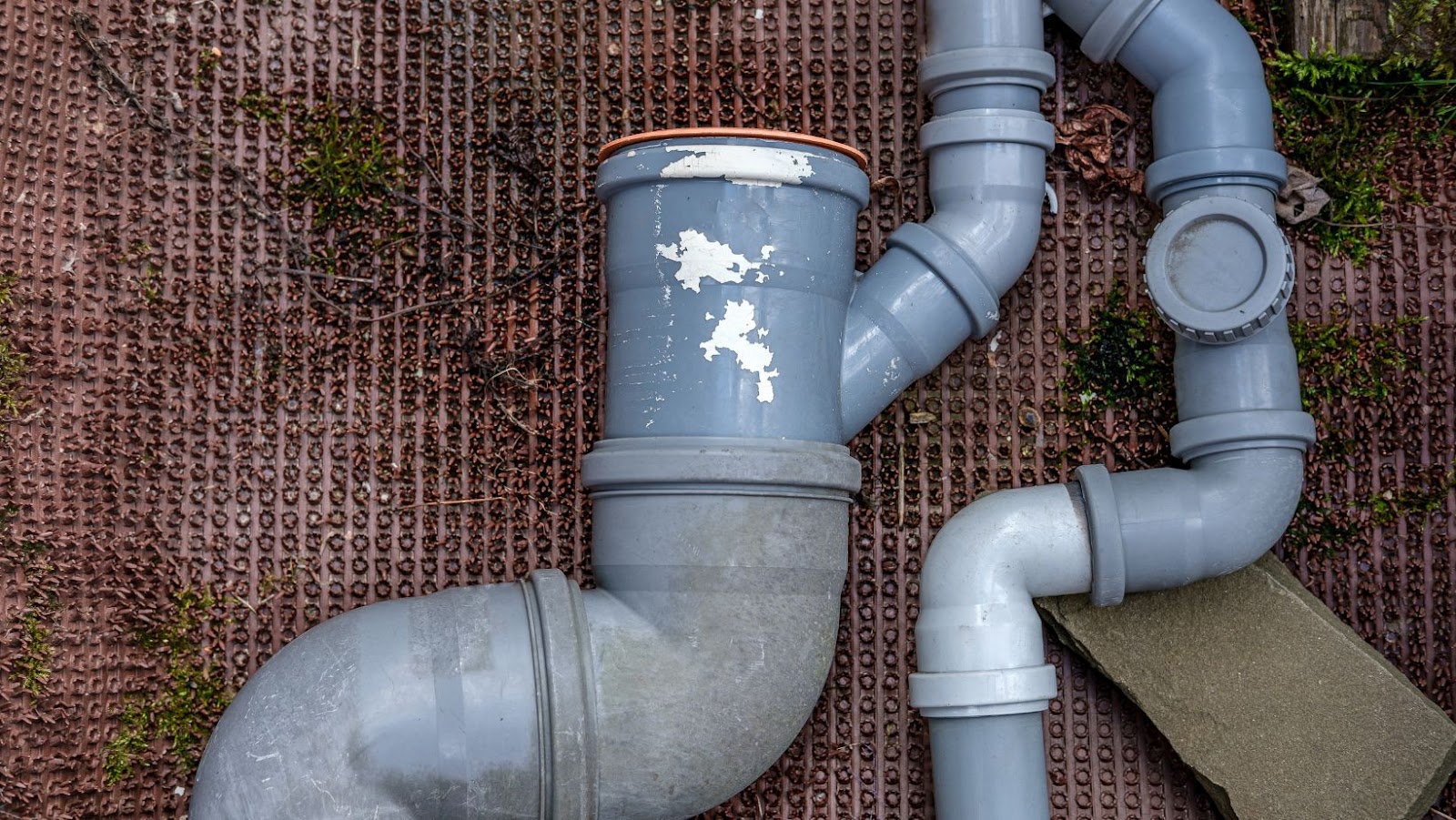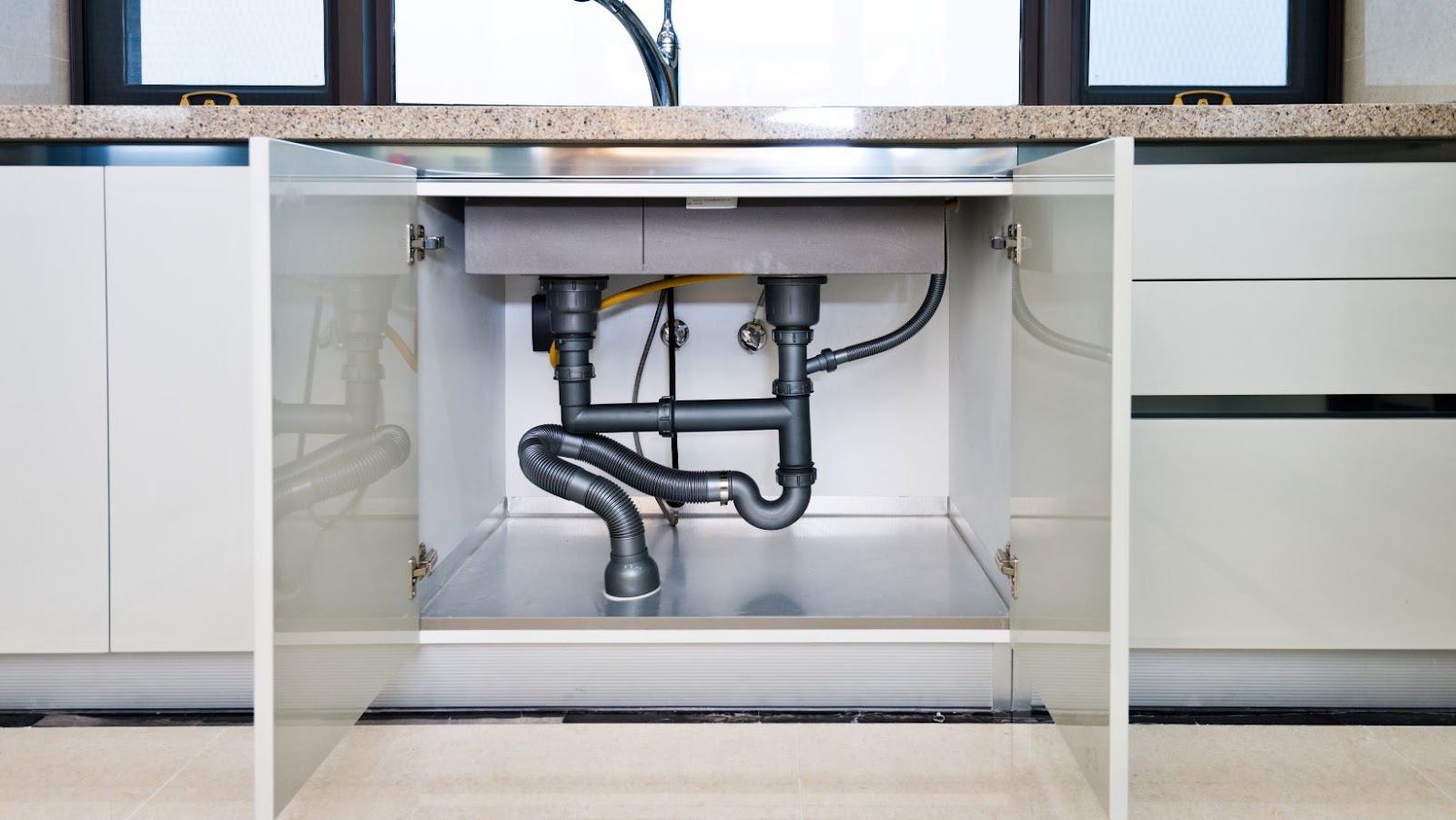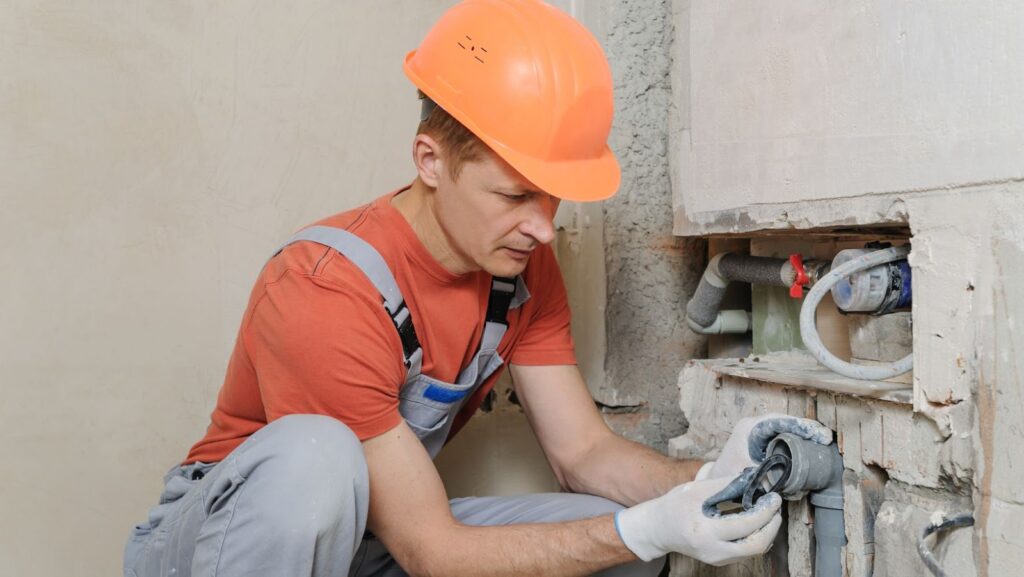How to determine if a kitchen renovation is worth it?
The smell of sewage coming from your shower can be very unpleasant and cause you to feel uncomfortable. Identifying the source of the smell is the first step towards making sure it goes away.
In this article, we’ll discuss some of the most common causes of a sewer smell in the shower and what you can do to identify the source and get rid of the smell:
Check the drain for clogs
In order to identify the source of a sewer smell in your shower, you need to check the drain for clogs. Start by removing the shower drain cover and seeing if there is any debris inside. Anything from hair, soap scum and other foreign objects can all cause clogs that result in sewer smells. Check both sides of the drain for blockages – occasionally there are multiple pipes running through one drain, so both will need to be checked separately.
If you’re unable to remove or dislodge any visible blockages in the drain, use a plumber’s snake or auger cable to try and snake out whatever might be causing a clog. Once this has been completed however, make sure you take regular measures for proper maintenance of your plumbing systems such as:
- Rinsing out soap scum build up regularly
- Limiting any foreign object from entering your drains
If no obvious blockage is found after examining the plumbing system, you may want to look elsewhere for possible sources of the bad smell. It can sometimes be helpful to have an inspection done by a professional plumber if it is determined that something else may be causing the stench such as a malfunctioning sump pump or other appliance in need of repair. Taking these logical steps will help ensure that your drains remain odor-free!
Check the water trap
The first step in diagnosing the source of sewer odor in your shower is to check your water trap. A water trap is a small U-shaped pipe located underneath the sink or bathtub that prevents odors, gases and other smells from entering your bathroom via the plumbing system. If a water trap’s contents have dried up, it can cause an unpleasant sewer smell.
To check if this is the case with your water trap, look under the sink or wherever else it may be located in your bathroom and see if there’s enough standing water in it to form a seal. If not, fill it with enough and see if this resolves the problem.

Check the vent pipe
Checking the vent pipe is a good place to start if your shower emits an unpleasant sewer smell. The vent pipe is usually found on the roof above the areas of your house where there are drains, and its purpose is to carry out foul-smelling air and sewer gases. When the plumbing system isn’t working properly, these gases may escape through the vent pipe and enter your bathroom, creating an unpleasant odor.
To ascertain whether this is likely to be the source of your problem, you should look for potential issues with the piping. See if any pipes or water locks have developed a crack; if so, these could allow waste water or bad odors to escape. Look for oily residues on or near the pipes that might indicate a blockage; this could happen from grease build-up from hair products or natural body oils. You should also check for any foreign objects that may have been inadvertently flushed down a toilet or drain and got stuck in one of your pipes, again causing nasty smells to emerge in showers and elsewhere around your home.
Common Causes of Sewer Smells
Are you noticing a noticeable sewer smell in your kitchen or bathroom, particularly when you use the shower? This can be an alarming problem, and identifying the source of the problem is essential for resolving it and preventing any further damage from occurring.
In this guide, we’ll look at some of the most common causes of sewer smells in bathrooms and showers:
Clogged drain
A clogged drain is one of the common causes of sewer smells in your shower. When the drain is clogged, organic materials and even dirt accumulate in the pipes and create a strong foul odor. This smell can be caused by a blockage in any part of the plumbing, including hair, soap scum, or foreign objects that have flushed their way into the sewer system.
Identifying a clog requires an inspection of your piping system to locate and determine if debris has become lodged inside. If it is determined that there is an obstruction or blockage, it may be necessary to admit air into the affected drain line to help break up and push out any accumulated blockages from inside. A professional plumber can identify these issues and take appropriate corrective action such as:
- Snaking to remove debris from within your sewer lines.
- Hydro jetting to remove debris from within your sewer lines.
Poorly sealed water trap
One of the most common causes of a sewer smell in showers is a poorly sealed water trap. The water seal is a curved section of your shower drain that keeps odors from exiting through the drain. When it becomes dry, it often releases an unpleasant stench throughout your bathroom.
To identify if this is the source of your foul odor, inspect the water trap in your bathroom and check for any cracks or gaps that may allow smells to escape. These can be caused by age and decay over time, or simply from having been sealed improperly when installed by previous owners or DIY jobs. If this appears to be the issue, you will likely need to replace the water trap with one that is properly sealed.
While this usually solves the problem at its source, if you continue to experience bad smells in your shower you should call a plumbing professional to inspect other potential sources. Poorly installed piping, fixtures or even tree roots in sewer lines can cause persistent sewage odors and need to be addressed by someone with proper training and expertise.
Broken or clogged vent pipe
When a vent pipe for the shower drainage is broken or clogged, it can cause sewer gases to escape and send an unpleasant smell back up into your bathroom. Your home’s plumbing system needs a vent pipe to move air in and out of the sewer system, allowing water and waste to flow freely without obstruction. If there is a blockage in the pipe, it can cause shower water and other debris to get backed up in the line—leading to a leak, buildup of pressure and ultimately an unpleasant smell.
If you’re noticing a sulfur-like scent coming from your shower drain, it’s likely due to either a broken or clogged sewer vent pipe. You should contact a professional plumber immediately to diagnose the problem so that it can be fixed properly. Even if you are able to find and clear away the blockage yourself, it’s important that you let an expert inspect both your vents and pipes before using your showers again. Doing this will ensure that any potential damages have been properly repaired, so you don’t experience further problems down the line.
How to Fix the Problem
A sewer smell in your shower can be a concerning issue in your home and should be dealt with immediately. Identifying the source of the smell is the only way to effectively solve the problem. Without proper knowledge, it’s difficult to find the source of the smell and fix it.
Let’s go through some steps to help identify the source of the smell and how to fix it:
Unclog the drain
When a sewer smell is present in the shower, it is usually an indication that air flow has been blocked somewhere in the pipes. This restricted air flow prevents new fresh air from entering the drain and allows sewer gas to filter up through the shower drain. Unclogging the drain should be your first step in taking care of this issue.
A quick remedy for unclogging a shower drain is to pour hot water and dish soap down it several times with a few minutes between each break. This will help to loosen any material that might have collected inside of your pipes. If this does not work, try using a plumbing snake or auger to remove debris from further down your pipes. You can also use chemical mixtures, but these can be dangerous if not used correctly, so take great caution if you decide to go this route. Additionally, make sure to follow safety precautions when dealing with electricity near water sources or when handling potentially harmful chemicals.
Clean the water trap
The water trap located beneath the shower is an effective moisture and odor blocker. It is an inverted “V” shaped pipe that works as a barrier to prevent odors from entering your bathroom. This can become clogged over time and needs to be cleaned out periodically.
To address this problem, you need to begin by emptying any extra water in the trap by pouring it down the drain. Once it is partially drained, use a plunger or similar tool to clear out any debris or clogs that may be blocking the pipe. Finally, flush the trap with hot water until it runs clear and all debris has been removed.
Performing this maintenance regularly can help ensure your shower remains odor-free and ensure its proper drainage of moisture from the floor area underneath your shower stall.

Replace the vent pipe
One potential cause of a sewer smell in your shower is a clogged or disconnected vent pipe. The job of the vent pipe is to allow air from outside the house to enter your plumbing and prevent pressure from building up in your pipes. The connected piece of pipe should be located near the roof and end just above ground level. You may need to hire a professional plumber for this job as it can be complicated.
To replace the existing vent, start by cutting the pipe away from the roof, making sure not to damage any shingles or other roofing material in the process. Next, you’ll need to make sure there are no clogs or blockages in any other part of your ventilation system. This could require removing parts of your gutter system as well as inspecting vents and fans throughout your home. If everything looks clear, start by attaching new piping going up through the roof and connecting it with sealed couplings. Finally, seal all connections with a vent sealant made specifically for this purpose and connect it with flexible pipes that go back down towards the sewer line. This should help ensure that odors don’t push their way back up through drains again and into your home when using certain fixtures like showers and toilets!
Prevention and Maintenance
Taking preventative measures to keep sewer smells away from your shower is the best way to guarantee a pleasant and clean shower experience. Understanding how the plumbing system works in your home is key to spotting any potential problems before they cause lasting damage.
In this section, we will go over how to identify potential sources of sewer smells, and how to keep on top of maintenance to ensure a fresh shower experience.
Regularly clean the drain
Regularly and thoroughly cleaning the shower drain should be part of routine maintenance, as it can help prevent a sewer smell from developing in the first place. Use a plunger to plunge the drain a minimum of once per month and monitor any changes in the odor in that area. If you are noticing any septic odors after cleaning, it may be time to call a professional drain cleaner to take care of any unseen blockage that is causing the problem.
Additionally, you will also want to make sure all hair, soap scum and other debris is regularly removed from the drain pipe, as this build-up can also cause odors when they mix with air and moisture while passing through. It’s also helpful to pour some hot water down the pipe every few weeks or so – this helps to adjust the pH levels of surrounding materials and can minimize odors from forming. Lastly, you may want to consider investing in an enzymatic drain cleaner – these often contain natural bacteria spores that help eat away at organic matter before it affects your home’s air quality.
Seal the water trap
Inspect the underside of your shower stall and secure any area where the drain meets the PVC water trap. This process may involve tightening a threaded clamp, screwing in a plastic cap or fitting, or applying a sealant. If an existing seal becomes cracked, use epoxy to coat it. Doing this task makes it more difficult for moisture and odors to escape into living spaces.
In some cases, you might find that the water trap has come loose and is no longer secured in place. To fix this problem, you will need to replace the damaged component with one that matches the initial design of your drain system. If you are unsure about how to fit the component properly, contact a professional plumber for assistance. Once your water trap is adequately secured in place again, it should help reduce odors coming from your shower drain significantly.
Inspect the vent pipe regularly
Regular visual inspections of the vent pipe are essential for identifying the source of sewer smell in your shower. A vent pipe is a feature typically found on homes that connect the plumbing system to the outdoors. It typically runs from the roof and is slightly angled. Its primary function is to help protect water pressure by allowing air to flow into and out of the plumbing system as required.
When conducting regular inspections, look for conditions that could enable sewer gases to flow downstream into your shower drain, such as:
- Cracks or splits in the piping
- Joints that have come apart
- Debris clogging where air escape should be allowed
Check for signs of deterioration around any of these components. If you do find any problem areas, take steps immediately to repair them and allow more airflow through the vents so that sewer gasses don’t become trapped in your home’s plumbing system.


More Stories
How to Protect Your Windows After a Storm Warning?
How to Evaluate Architecture in Milwaukee Neighborhoods and Find the Ideal Location
How to Choose the Ideal Roofing Shingles for Your Home